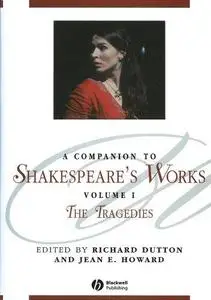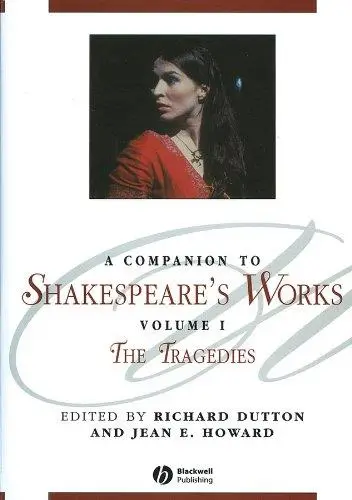A Companion to Shakespeare's Works, Volume 1: The Tragedies By Richard Dutton, Jean E. Howard (eds.)
2003 | 501 Pages | ISBN: 063122632X | PDF | 3 MB
2003 | 501 Pages | ISBN: 063122632X | PDF | 3 MB
The four-volume Companion to Shakespeare's Works, compiled as a single entity, offers a uniquely comprehensive snapshot of current Shakespeare criticism. This volume looks at Shakespeare’s tragedies. Contains original essays on every Shakespearean tragedy from Titus Andronicus to Coriolanus.Includes thirteen additional essays on such topics as Shakespeare's Roman tragedies, Shakespeare's tragedies on film, Shakespeare's tragedies of love, Hamlet in performance, and tragic emotion in Shakespeare. Brings together new essays from a diverse, international group of scholars. Complements David Scott Kastan's A Companion to Shakespeare (1999), which focused on Shakespeare as an author in his historical context. Offers a provocative roadmap to Shakespeare studies. Content: Chapter 1 “A rarity most beloved”: Shakespeare and the Idea of Tragedy (pages 5–22): David Scott KastanChapter 2 The Tragedies of Shakespeare's Contemporaries (pages 23–46): Martin CoyleChapter 3 Minds in Company: Shakespearean Tragic Emotions (pages 47–72): Katherine RoweChapter 5 The Divided Tragic Hero (pages 73–94): Catherine BelseyChapter 5 Disjointed Times and Half?Remembered Truths in Shakespearean Tragedy (pages 95–108): Philippa BerryChapter 6 Reading Shakespeare's Tragedies of Love: Romeo and Juliet, Othello, and Antony and Cleopatra in Early Modern England (pages 108–133): Sasha RobertsChapter 7 Hamlet Productions Starring Beale, Hawke, and Darling From the Perspective of Performance History (pages 134–157): Bernice W. KlimanChapter 8 Text and Tragedy (pages 158–177): Graham HoldernessChapter 9 Shakespearean Tragedy and Religious Identity (pages 178–198): Richard C. McCoyChapter 10 Shakespeare's Roman Tragedies (pages 199–218): Gordon BradenChapter 11 Tragedy and Geography (pages 219–240): Jerry BrottonChapter 12 Classic Film Versions of Shakespeare's Tragedies: A Mirror for the Times (pages 241–261): Kenneth S. RothwellChapter 13 Contemporary Film Versions of the Tragedies (page 262): Mark Thornton BurnettChapter 14 Titus Andronicus: A Time for Race and Revenge (pages 284–302): Ian SmithChapter 15 “There is no world without Verona walls”: The City in Romeo and Juliet (pages 303–318): Naomi Conn LieblerChapter 16 “He that thou knowest thine”: Friendship and Service in Hamlet (pages 319–338): Michael NeilChapter 17 Julius Caesar (pages 339–356): Rebecca W. BushnellChapter 18 Othello and the Problem of Blackness (pages 357–374): Kim F. HallChapter 19 King Lear (pages 375–392): Kiernan RyanChapter 20 Macbeth, the Present, and the Past (pages 393–410): Kathleen McLuskieChapter 21 The Politics of Empathy in Antony and Cleopatra: A View from Below (pages 411–429): Jyotsna G. SinghChapter 22 Timon of Athens: The Dialectic of Usury, Nihilism, and Art (pages 430–451): Hugh GradyChapter 23 Coriolanus and the Politics of Theatrical Pleasure (pages 452–472): Cynthia Marshall



